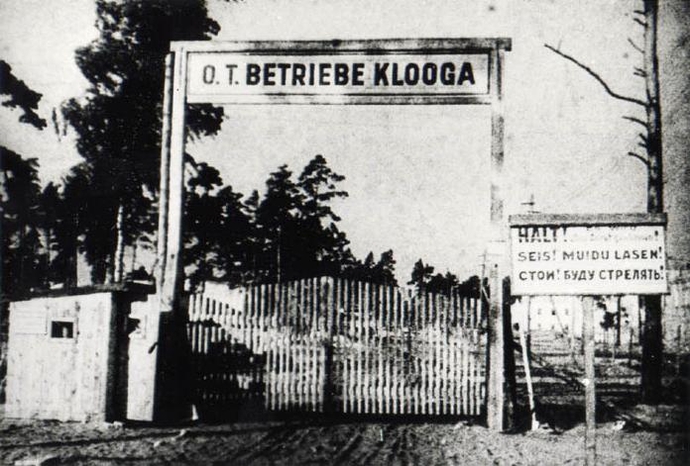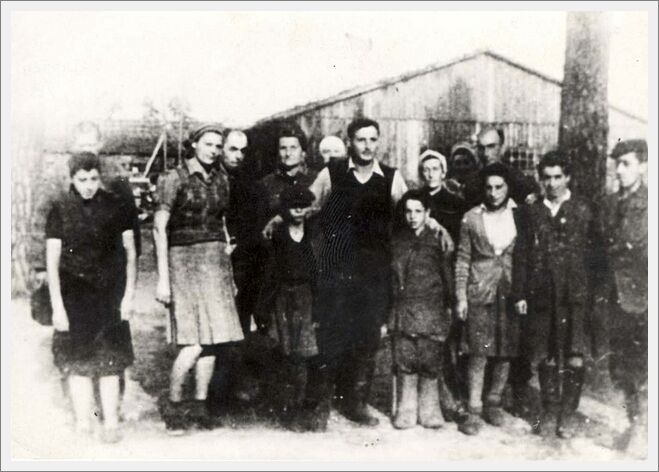
When I say “the Jews who fought alongside the Nazis,” it really was a case of the enemy of my enemy—is my friend, or rather they had a common enemy. The photograph above is of Finnish Jewish soldiers on leave during Rosh Hashanah in front of the synagogue in Turku, Finland, in 1943.
Finland’s involvement in World War II began during the Winter War, which started on 30 November 1939 and lasted until 13 March 1940, the Soviet Union’s invasion of Finland prior to Operation Barbarossa, Finnish Jews evacuated Finnish Karelia along with other locals. Also, the Jewish Wiborg Synagogue was destroyed by air bombings.

In June 1941, the Nazis breached the Molotov-Ribbentrop Pact and invaded the Soviet Union. The Finns, hoping to regain the formerly annexed land following their degrading concession, chose to collaborate with the Germans. The Finnish army invaded the territory that earlier had been seized by the Soviet Union.
327 Finnish Jews fought for Finland during the war, of which were 242 rank-and-file soldiers, 52 non-commissioned officers, 18 officers and 15 medical officers. Additionally, 21 Jews served in the women’s auxiliary Lotta Svärd.

That is how Finnish Jews who were serving in the army found themselves in a uniquely awkward and even difficult position. On the one hand, loyal Finnish citizens born and grew up in the country set out to fight for their country’s independence. On the other hand, they were compelled to collaborate with a superpower, which, after years of antisemitic legislation, had embarked on the systematic annihilation of the Jews.
Finland was the only European combatant country in which none of its Jewish citizens were sent to concentration or extermination camps.
Despite Germany demanding that Finland introduce anti-Semitic laws like in the rest of Nazi-controlled Europe, the Finns refused, treating their Jewish soldiers with respect. When Heinrich Himmler visited Finland in the summer of 1942, he asked the Finnish Prime Minister, Jukka Rangell, about the “Jewish question.” Jukka’s reply was brief, “We do not have a ‘Jewish Question.’” There was even a field synagogue for the Jewish soldiers, with some Germans visiting the synagogue and showing respect for the Jews who prayed there despite the propaganda they were shown for years.

Author John B Simon describes in his book, Strangers in a Stranger Land—How One Country’s Jews Fought an Unwinnable War alongside Nazi Troops and Survived, how some Germans were curious to watch the services by peeking in quietly and noted that the Finnish Jews talked Yiddish to each other, which they took for a type of German.
The only time that the Finns gave in to the demands of the Nazis was in November 1942. The chief of the Finnish State Police agreed to hand over eight Jewish refugees from the Soviet Union and Estonia to the Gestapo, whose extradition was demanded by the Germans on criminal grounds. The Finns brought the Jews to Tallinn, which was already under German occupation. Seven of the Jews were promptly executed by the Nazis, and one managed to survive. After the media in Sweden and Finland discovered what had happened—it caused a political uproar. After—a clear order was given by the government—to prevent similar incidents from happening in the future.
Three Finnish Jews were offered the Iron Cross for their wartime service: Leo Skurnik, Salomon Klass, and Dina Poljakoff. Major Leo Skurnik, a district medical officer in the Finnish Army, organized an evacuation of a German field hospital when it came under Soviet shelling. More than 600 patients, including SS soldiers, were evacuated. Captain Salomon Klass, also of the Finnish Army, who had lost an eye in the Winter War, led a Finnish unit that rescued a German company that had been surrounded by the Soviets. Dina Poljakoff, a member of Lotta Svärd, the Finnish women’s auxiliary service, was a nursing assistant who helped tend to German wounded and came to be greatly admired by her patients. All three refused the award.
Alongside the Germans, Finland continued to fight the Soviets until the end of the summer of 1944. After the Germans sustained heavy losses and the counteroffensive launched by the Soviet army also led to regaining some Finnish territory, the Finns proposed an armistice. In September 1944, an agreement was signed between Finland and the Soviet Union. A short time later, Finland declared war on Germany and joined the Allied forces.
On December 6, 1944, Finland’s Independence Day, Carl Gustaf Mannerheim, now the country’s new president, visited the synagogue in the city of Turku. He came there to honour the memory and loyalty of the Finnish Jews who were killed defending their country.
Sources:
https://www.atlantajewishtimes.com/astonishing-story-of-survival-by-jews-of-finland/
https://www.jstor.org/stable/260956
https://www.jewthink.org/2021/01/07/how-finlands-jews-fought-alongside-the-nazis/

Donation
I am passionate about my site and I know you all like reading my blogs. I have been doing this at no cost and will continue to do so. All I ask is for a voluntary donation of $2, however if you are not in a position to do so I can fully understand, maybe next time then. Thank you. To donate click on the credit/debit card icon of the card you will use. If you want to donate more then $2 just add a higher number in the box left from the PayPal link. Many thanks.
$2.00















You must be logged in to post a comment.